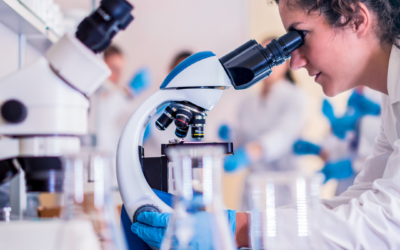Pharmacovigilance is an incredibly essential component of monitoring patient safety. One of the largest responsibilities of pharmacovigilance professionals is to observe adverse drug reactions (ADRs) and act in the best interest of the public.
While the drug safety measures are always increasing, so are the amount of global adverse drug reaction hospitalizations. In fact, ADRs are responsible for 5-15% of hospitalization cases in young to middle aged patients, and are responsible for 24% of cases in elderly patients.
Needless to say, ADR reporting is abundantly important for things such as:
- Early detection of serious and uncommon complications
- Guiding causality hypothesis
- Investigation priorities
- Regulatory measures
To gauge the global grasp on pharmacovigilance and ADR reporting processes, a recent study regarding the overall PV program development in several different countries was carried out by surveying pharmacists.
The results serve as a roadmap for pharmacovigilance professionals to begin the global development of PV programs.
The Study
The study surveyed 343 pharmacists from around the globe about their feelings toward pharmacovigilance and ADR reporting in terms of:
- Knowledge
- Attitudes
- Practices
- Barriers
- Influencing factors
While some countries differed in their perceived knowledge as opposed to their actual knowledge, the study findings offered relatively consistent results on the other four survey questions.
Global Attitudes Toward Pharmacovigilance and ADR Reporting
When hospital pharmacists were asked if they were willing to spend adequate time to review and report adverse drug reactions with their management, a resounding 90.6% indicated that they would be more than interested in doing so.
Given that reviewing the reporting ADRs would require pharmacists and other healthcare professionals to spend more time at work, 69.6% of survey participants believe that those who do so should be rewarded in some way.
While 92.4% of survey responses indicated that patients should be able to directly report ADRs themselves, 7.6% believe that this responsibility should fall singularly on medical staff.
Current Pharmacovigilance Practices
While 71.1% of pharmacists observed at least 1-5 adverse drug reactions, only 53.3% indicated that they reported the reaction to the correct local and national bodies.
Additionally, though 75.3% of participants reported that their workplace did provide information on ADR reporting and pharmacovigilance processes, only 44.74% of respondents indicated that they had received training on how to apply said information.
Barriers to Adverse Drug Reaction Reporting
The ultimate barrier to reporting ADRs was observed to be the lack of awareness about ADR reporting processes, as indicated by 57% of respondents. Beyond that, an additional 20.2% strongly agreed with this statement.
Study participants were given the following list of barriers, and agreed at 7 out of 8 were major barriers to reporting ADRs accurately:
- Lack of reporting process awareness
- Not a job requirement of pharmacists
- All serious ADRs are detected before the drug is marketed
- Fear of consequences after reporting
- Lack of awareness of the existence of national ADR reporting systems
- Pharmacovigilance topics are not included in pharmacy curriculum
- Lack of proper ADR training
- Difficulty in deciding whether ADR has occurred or not
Influencing Factors
Though these barriers are challenging to overcome on both a national and global scale, many respondents found there to be some factors that could influence healthcare professionals to report ADRs regularly.
For example, 63.5% of participants felt that encouraging healthcare professionals through information and reward would enhance ADR reporting. Similarly, 60.5% of pharmacists would like to see more workshops and ongoing education opportunities.
Solutions
Altogether, these survey results created the opportunity for the global pharmacovigilance industry to map our next steps towards accurate ADR reporting.
As observed, the following solutions may be viable options for enhanced reporting:
- Arranging opportunities of education and training of pharmacists by pharmacovigilance experts
- Incorporation of pharmacovigilance topics in undergraduate curriculum to increase awareness
- Consistent encouragement and reward of all healthcare professionals to report ADRs
Ultimately, pharmacovigilance is an industry of constant change. To match patient safety efforts with the ever-changing landscape of drug development, we must commit to training our healthcare professionals from the beginning of their education through the entirety of their careers.
Starting with training pharmacists globally, we can begin changing the impact adverse drug reactions have on our public.
Source:


0 Comments